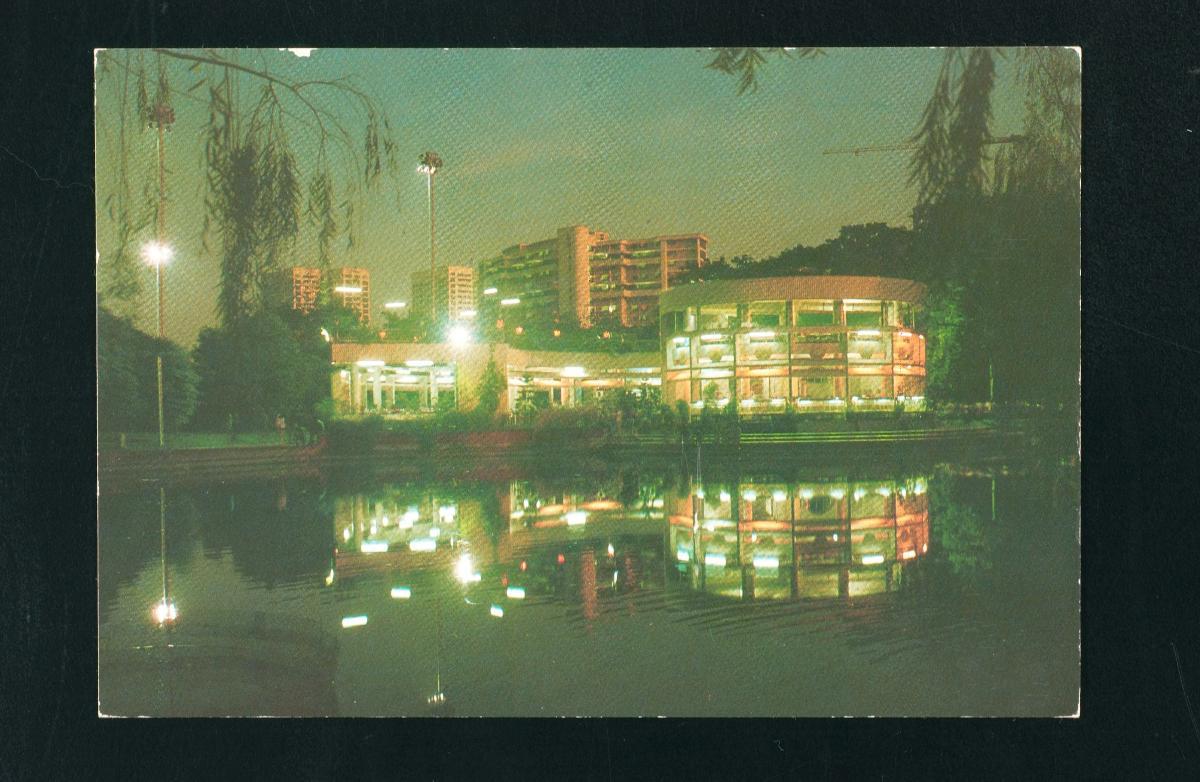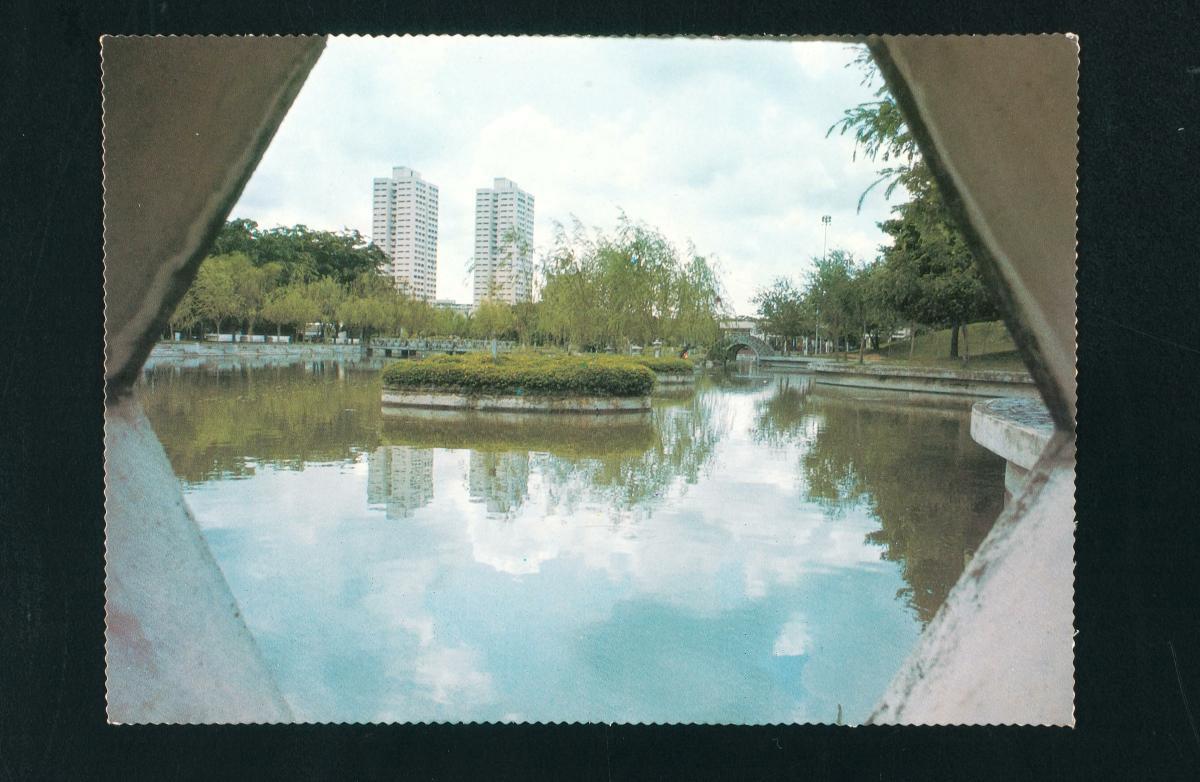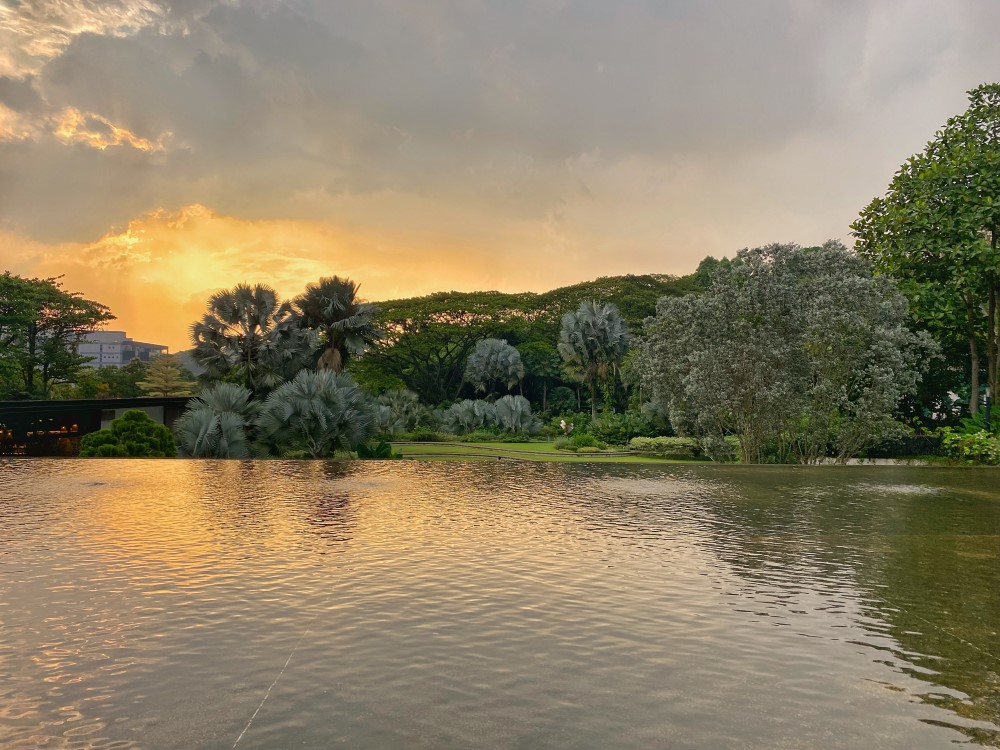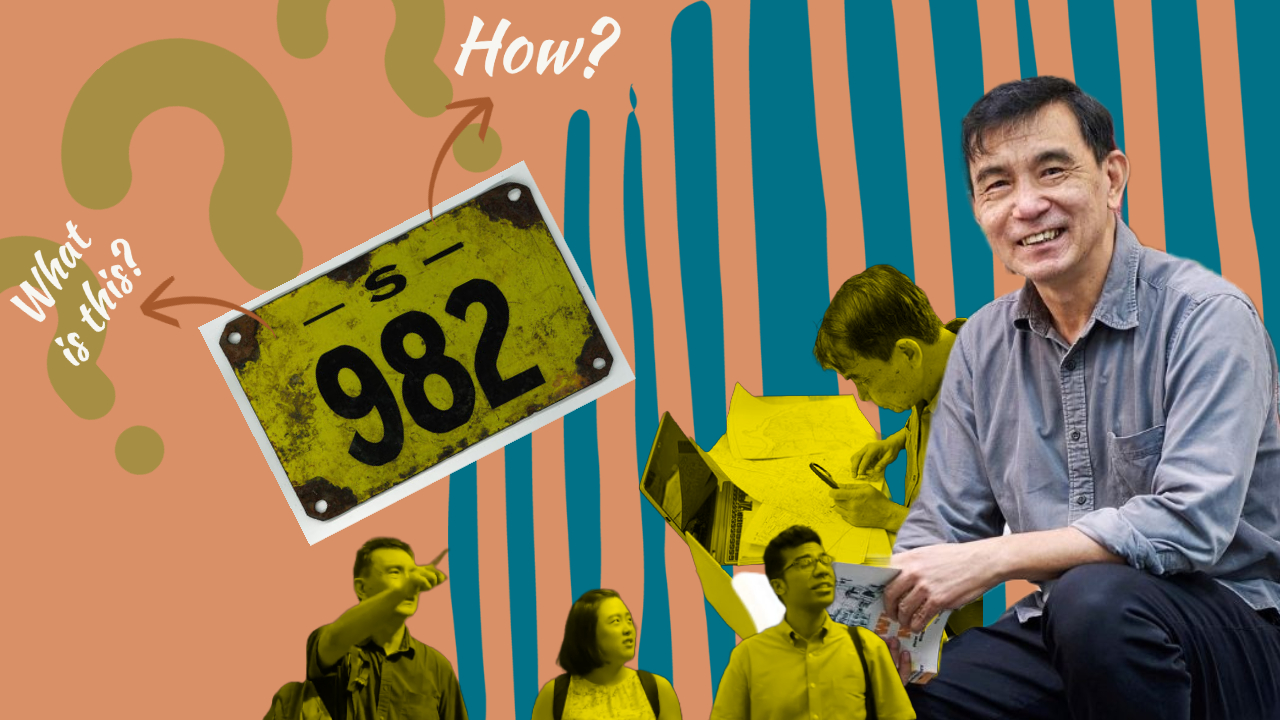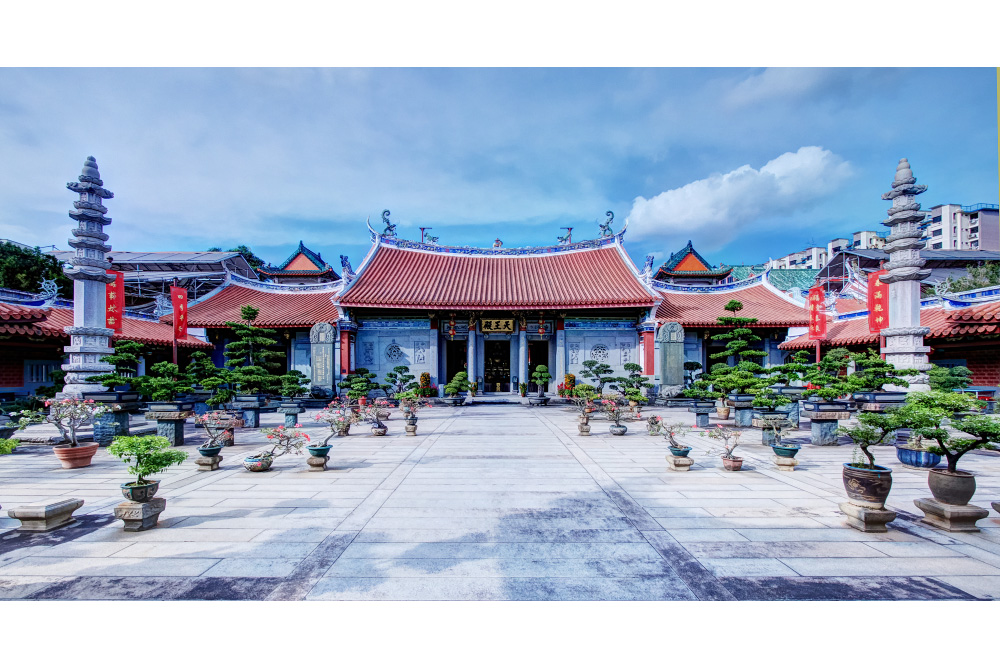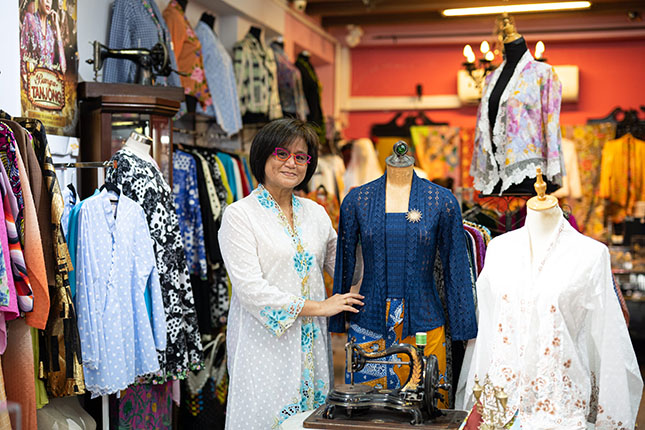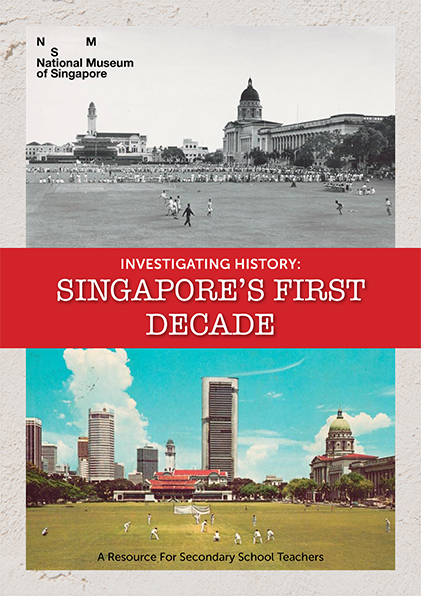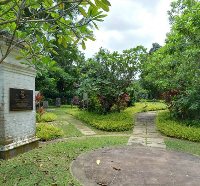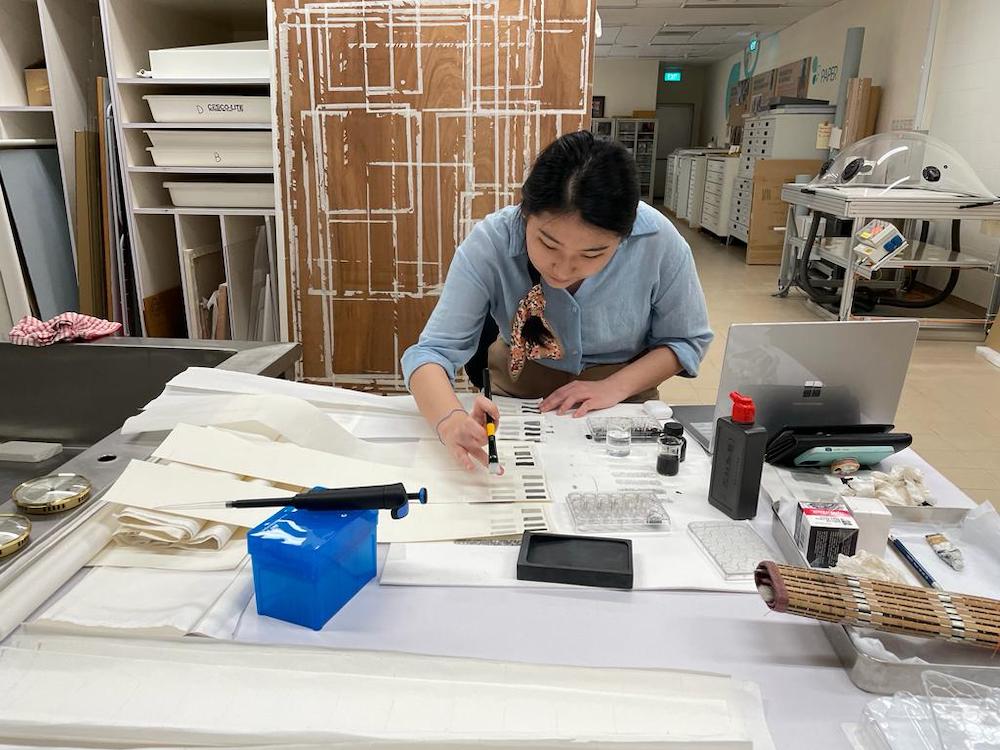TL;DR
The article discusses the significance of vernacular gardening practices in shaping Singapore's identity as a "Garden City". It highlights the historical and cultural importance of vernacular gardens such as Kampong Gardens, Community Gardens, and HDB Corridor Gardens, as part of Singapore's intangible cultural heritage. It also presents oral history interviews and personal experiences to illustrate the importance of these gardening spaces in the lives of Singaporeans.Singapore today is internationally renowned for its epithet ‘Garden City’. Firmly entrenched in the official narrative as a linchpin of its national and global identities, the imagery of a verdant city-state serves as a reflection of Singapore’s economic prosperity along with the success of its governance model.[1] Though largely attributable to the state-led greening campaign initiated in 1967 by then-Prime Minister Lee Kuan Yew, public parks, formal gardens and roadside trees do not constitute the entirety of Singapore’s rich gardening heritage as a ‘Garden City.[2] It is equally important to consider the vernacular gardening practices through which Singaporeans exert their historical agency in shaping the ‘Garden City’. After all, beyond eating and shopping, gardening is one of the more enduringly popular pastimes in Singapore. Indeed, according to a survey conducted by the National Parks Board, approximately one in two respondents cultivate plants.sup>[3] With the onset of the recent COVID-19 pandemic, the popularity of gardening as a hobby has only exponentially increased.[4]
Nestled unnoticed amidst the panoply of Singapore’s public plantings, lies the variegated gardens of the everyday. Found in a wide range of residential and public settings, vernacular gardens are tightly interwoven into the fabric of everyday life as stylistically informal small-scale green spaces cultivated on a by individuals and their communities.[5] They are, in other words, touchstones of a community’s relationship with its physical landscape. Being typically (but not exclusively) grown by people from lower socio-economic classes, these gardens have often provided not just recreational diversion but also nutritional sustenance especially during periods of acute food security stress such as war and economic crises.[6] It is thus not particularly surprising that vernacular gardening practices have already been included in the Intangible Cultural Heritage inventories of many countries under the category “Knowledge and Practices concerning Nature and Universe”. Market gardens, for instance, are considered an integral aspect of the medieval urbanisms preserved through the UNESCO World Heritage Site of Bamberg in Germany.[7] In Sri Lanka, the Kandyan home gardens embody its agroforestry and subsistence gardening tradition.[8] Similarly, tree breeding techniques employed in the traditional bāgh gardens of Tajikistan are considered to be part of its intangible cultural heritage.[9]
This article presents a preliminary list of common vernacular garden typologies found in Singapore. It seeks to briefly sketch out the historical trajectories of Singapore’s various vernacular gardening spaces during island’s post-independence period (1965-present) through everyday microhistories of Singaporean gardeners. These narratives draw primarily upon oral history interviews conducted as part of the National Heritage Board (NHB) funded project, The ‘Other’ Garden City: Documenting Singapore’s Vernacular Gardening Heritage. Vernacular gardens tend to have limited archival records as they are usually created and maintained by ordinary individuals outside of a formal institutional context. Reconstructions of their histories thus rely heavily upon the oral testimonies of individual gardeners. Their recollections are not only valuable sources of otherwise unobtainable empirical data about vernacular gardening spaces, but are also privileged windows into the lived experience of the gardeners themselves.[10] For this reason, oral history has gained popularity among garden historians studying vernacular gardening, especially in the United States and New Zealand.[11]
This article hopes to serve as an important first step towards the recognition of vernacular gardens as part of Singapore’s intangible cultural heritage. Vernacular gardens are inherently transient spaces which often appear as quickly as they disappear. Gardens may be left to decay by absent gardeners, or even cleared away by government officials. This is especially so in Singapore’s constantly changing urban landscape, where redevelopment is the rule rather than the exception. While officially sanctioned community gardens continue to proliferate and attract scholarly and public attention, other vernacular gardening practices in allotments, alleyways, backyards and high-rise flat corridors remain under-documented.[12] Properly documenting Singapore’s diverse vernacular gardening heritage requires historians to not only articulate a broad typology of Singapore’s vernacular gardens, but also reconstruct these sites with granular specificity, even if they no longer exist. The vernacular garden types covered in this article are as follows: (1) Kampong Gardens, (2) Community Gardens, (3) HDB Corridor Gardens.
Kampong Gardens
Kampongs (“village” in Malay) were historically the main form of housing settlement in Singapore until the 1970s, when their inhabitants were gradually relocated to Housing and Development Board (HDB) flats through successive waves of large-scale resettlement. These informal settlements, predominantly occupied by the working class, consisted of rudimentary wooden houses with attap or zinc roofs.[13] Households typically cultivated kitchen gardens in adjacent plots to supplement their diet with fruits and vegetables.[14] Despite the widespread knowledge of this practice, the limited archival records make it challenging to thoroughly document the historical significance of kampong gardening.[15]
Oral history interviews with former kampong dwellers such as Richard play an important role in addressing this evidential gap. Richard, who lived in a coastal kampong on the offshore Southern Island of Pulau Brani for almost 12 years from 1958 to 1970, offers valuable insights into the reasons and methods behind kitchen gardening in his kampong. His firsthand involvement in helping his parents tend their kitchen garden provide concrete empirical evidence of the practice, including the specific plant species cultivated, the role of such spaces in household food production, and its perception by neighbours, as demonstrated by the following anecdote:
What we grow is only for our own personal family consumption where we have fruit trees, chiku, banana is very common. Uhm this guava, that is a Malay name guava. Then we have things like jackfruit you know and papaya. So these are the basic fruits that we grow. Then we have vegetables like kang kong, very common to find in … in the island and a kind of a vegetables, which we call it morning glory, which is edible, you can find also in Thailand. So those are the kind of fruits that we do. Then we have Cai Xin, Cai Xin and some other plants, herbal plants, lots of onions, and also these, this green uhm pandan leaf, where we use it, we extract it to bake cakes, to give the flavour to curries, etc. And on top of that, we have poultry farming. So we … have chickens, we have ducks, we have uhm basically chickens and ducks, so we have a lot and they are just uhm you know ... they are very healthy and, and I think the neighbours love it very much. So we, we love to work with them, and they will sometimes work with us also.[16]
While most of Singapore’s kampong settlements have been redeveloped, memories of this gardening practice still live on in the form of ‘kampong-style’ gardens cultivated on vacant lots at the ground floor of HDB flats. Like the kampong garden, these green spaces also grow a wide assortment of vegetables, fruit trees and herbs. The main function of ‘kampong style’ gardens, however, is not edible food production but rather to serve as a site of memory for Singaporeans to relive their rural nostalgia by means of recreating and recalling the domestic kitchen gardens of the kampongs.[17]
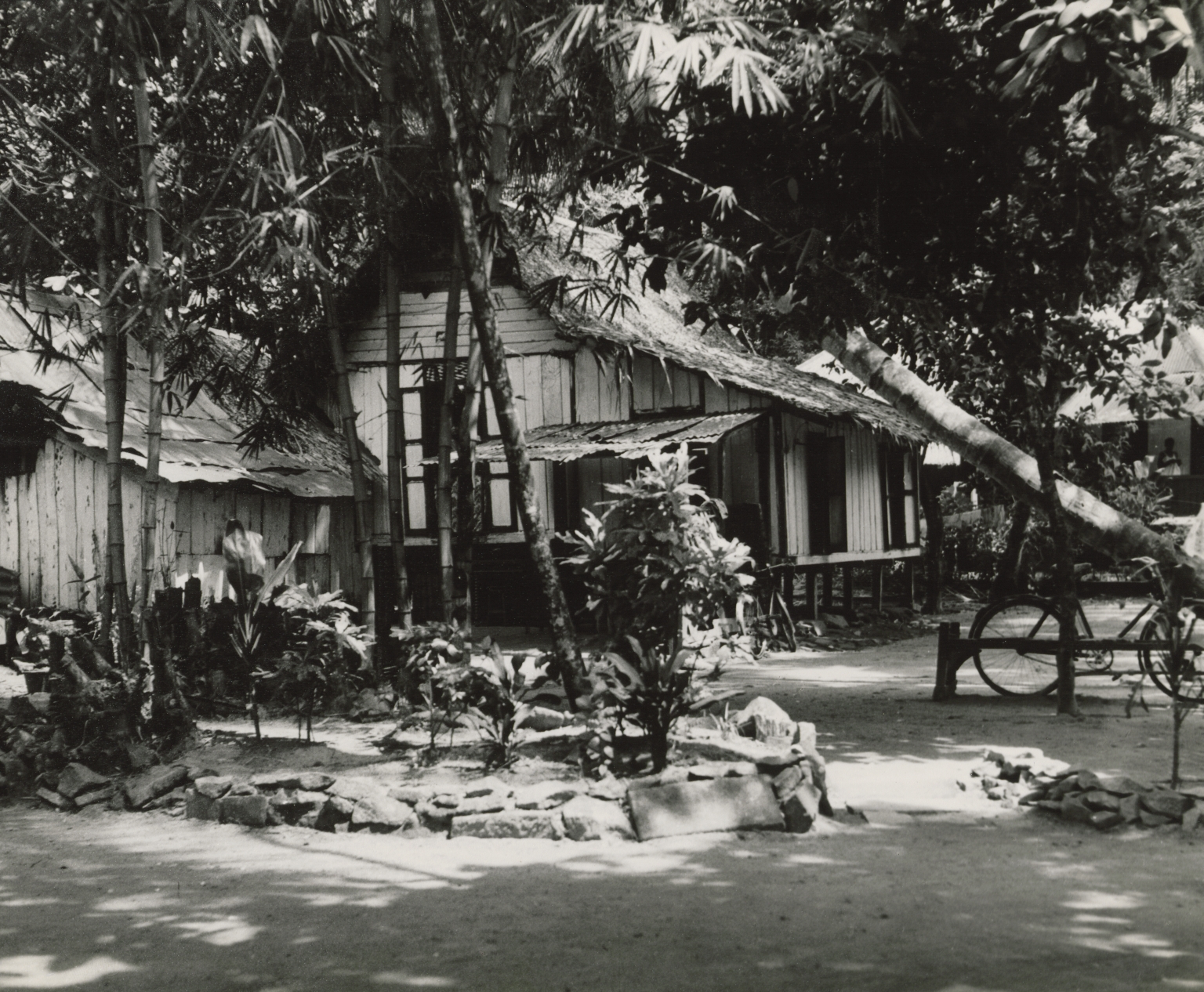
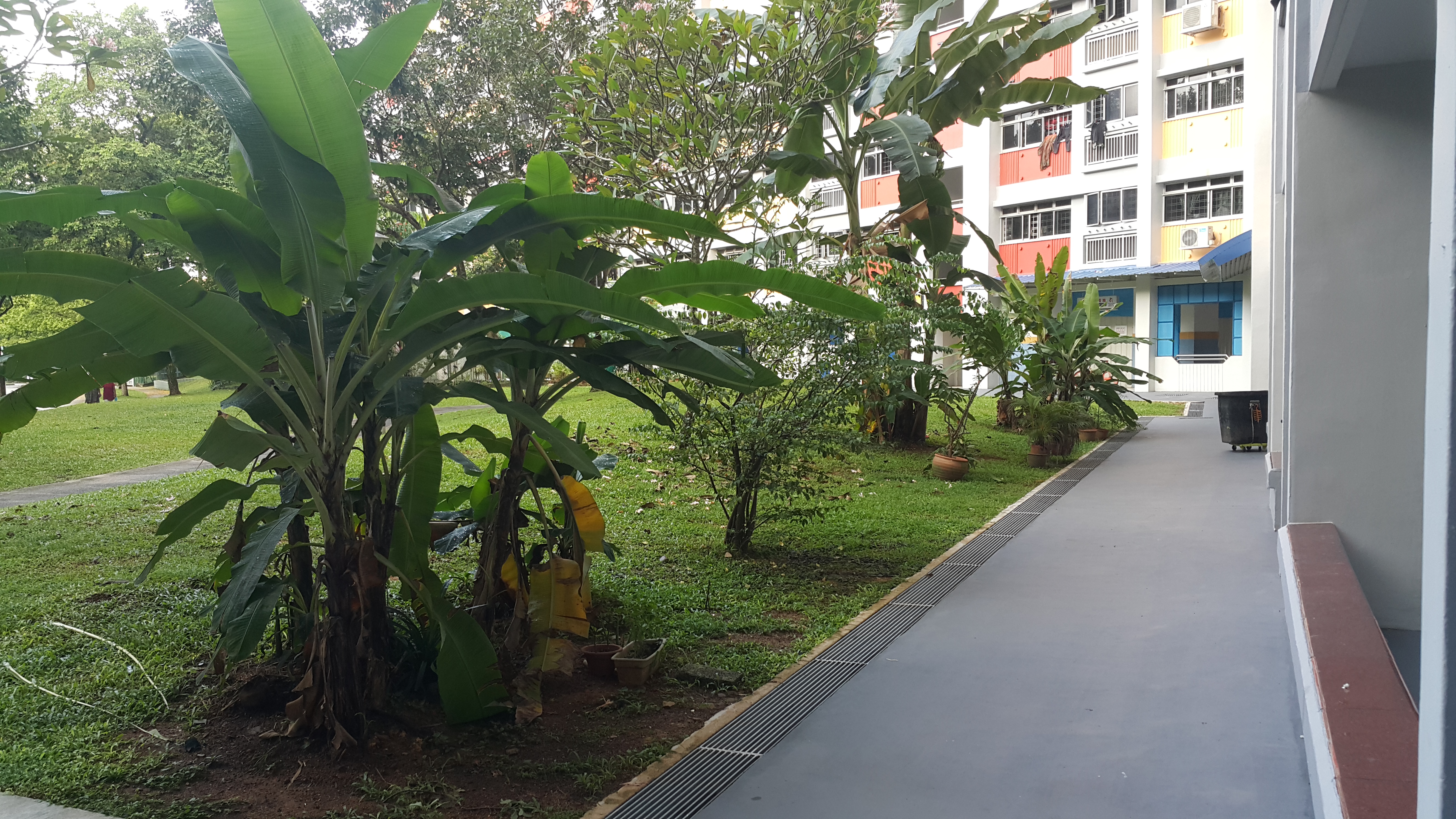
Community Gardens
Run by grassroots organisations like the Resident’s Committees, community gardens are ubiquitous green spaces found in nearly every HDB estate. Most of these gardens are created as part of NParks’ Community in Bloom (CIB) initiative. First launched in May 2005 at Mayfair Park Estate, this initiative aims to “foster a community spirit and bring together residents, both young and old, to make Singapore our City in Nature”.[18] Oral histories provide an important window into the otherwise undocumented microhistories of these green spaces and the multifaceted lived experiences of community gardeners.
The histories of community gardening spaces often predate and extend beyond the formal framework of the CIB initiative. This is exemplified by the Jurong Sky Garden, a community garden located on the roof of a multi-storey HDB carpark in Jurong East. Although established under NPark’s CIB programme in 2010, the community of gardeners working on this space have been gardening together even before 2005. Kamisah Atman, the community garden’s veteran leader, recounts that she started gardening together with three other residents in 2002 at “the little garden downstairs” on the site of the present carpark. It was only in 2010 that they were forced to relocate their community garden to a multi-storey carpark built over the former ground floor garden. When asked about her initial involvement in community gardening in 2002, her answer reveals that her personal experience of vernacular gardening dates back even further.[19] Having started gardening along the HDB corridor as a precocious youth in 1975, she saw community gardens as a means to expand the variety of plants she could cultivate. As she puts it:
Oh 2002 I garden yeah, because actually I started gardening when I was 18. Yeah, just plant Roses and Jasmine at my then houses Ghim Moh Corridor. Then there's sunlight and then the flowers turn out good, nice. But every time stolen, always overnight, wait my roses gone, then from there I stopped. I stopped, I gave up. Then when I moved here in 1983, then only 2002 then they start to have the garden, then I joined them. I joined the garden because I under the RC right? Then I joined. So I joined them, from there we just carry on. At least I can with the ground floor gardener. Then we can plant sunflowers all this because we have full sunlight and unlike corridor where you don't full sunlight, cannot plant sunflowers. [20]
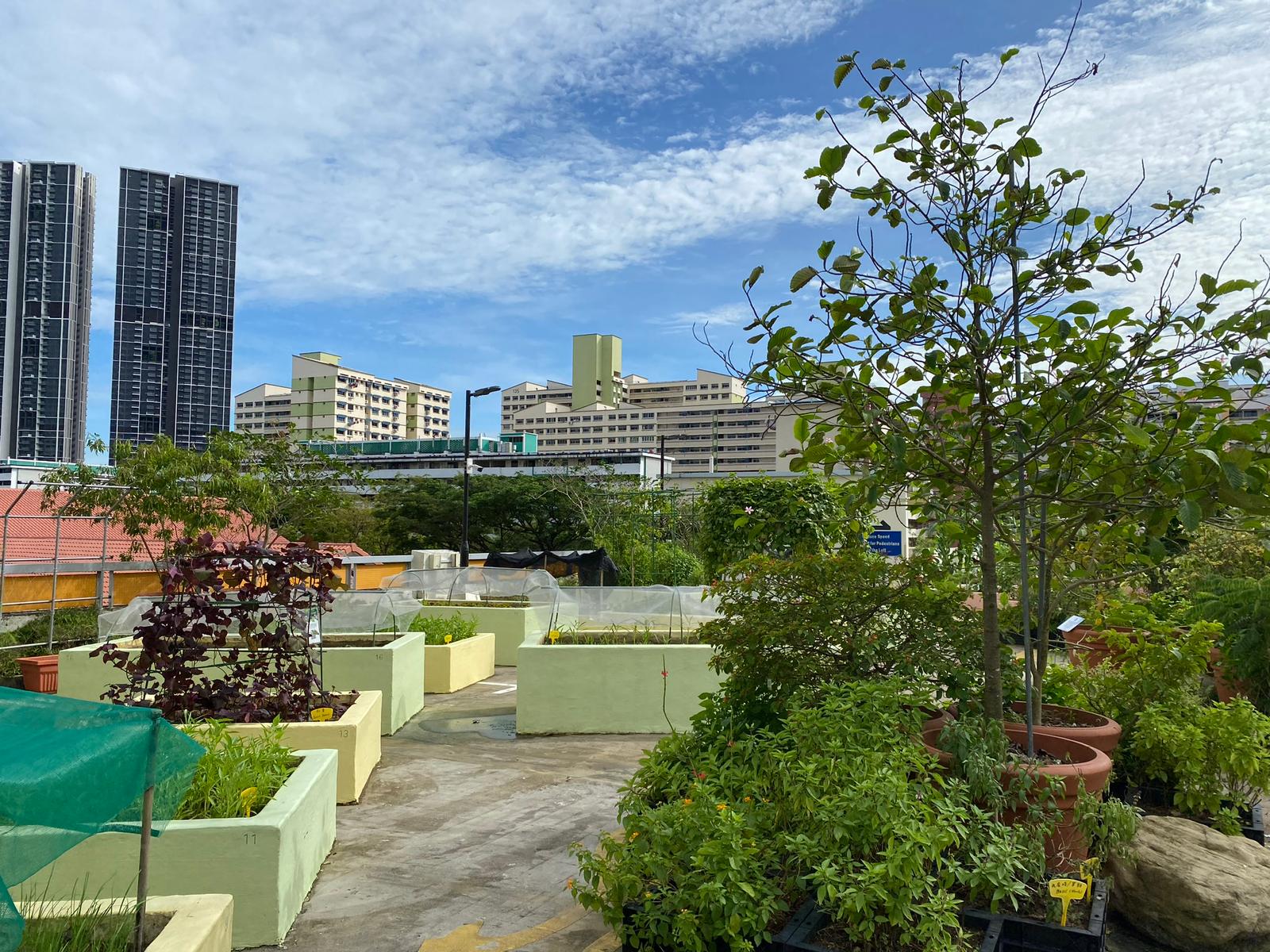 Giving Garden@ Kim Tian West, Tiong Bahru (2023). Photo courtesy of the authors.
Giving Garden@ Kim Tian West, Tiong Bahru (2023). Photo courtesy of the authors.
The oral histories collected at Jurong Sky Garden also reveal the joys and difficulties of participating in a community garden. Notably, many participants relished the companionship, the weekly sharing of fresh produce with neighbours, as well as the activity of gardening itself. As Kamisah remarks:
I say, I always tell my gardeners you know, your objective to come here is to no need to go market to to get all the harvest or you want friendship, you want to be happy, you want to laugh, you want to work together, cry together then so it's very simple.
For others such as Lau Suan, however, personal memories of Jurong Sky Garden tend be bittersweet. Like Kamisah, Lau Suan, a gardener in her 60s at Jurong Sky Gardens, tends to the same gardening space, plucking weeds, harvesting basil leaves, and uprooting sweet potatoes. Yet, due to the limited space and the communal nature of the garden, personal preferences often have to take a back seat for the sake of neighbourly goodwill. For this reason, Lau Suan sighs resignedly,
Whatever they said to plant, I would plant. It's not about what I like, it's about what needs to be planted.[21]
Even so, the joys of gardening outweigh the challenges of setting aside personal desires. When asked about her favourite part of gardening, Lau Suan acknowledges that gardening is inherently enjoyable:
Growing vegetables. When the plants grow nicely, I'm happy. It's a joy when they turn out beautiful.[22]
HDB Corridor Garden
With 77% of Singapore’s resident population living in public flats, high-rise corridor gardening is an undoubtedly ubiquitous vernacular gardening type found in HDB estates across the island today.[23] While these spaces may seem unremarkable collectively, each individual HDB corridor garden has a unique story to tell. The untimely end of Richard’s kampong garden at Pulau Brani in 1970 did not halt his family’s gardening activities. Instead, upon resettling to a flat in Holland Village, Richard’s parents instinctively made use of the empty corridor space outside their door as a gardening space to grow flowers and herbs:
Interviewer: Did your family bring any plants to their HDB flat when resettled in Holland Village?
Richard: No, I don't remember. I don't think so. Because most of the plants are hanging pots and then my parents just leave it there. We just move out. And then of course when we move to our HDB flat, then we start to do our own simple planting. But it cannot be compared to what we did in the island. Because now in the HDB, you can't really do much then during that time and that's not the priority then.
Interviewer: What do you garden? Do you remember much about this, gardening in the HDB flat?
Richard: I think my mum will still grow things that she can use like the pandan leaf. We have a rose plant because the, our corridor is received full sunlight. Hibiscus, my mum will grow and I think balsam plant and some edibles like onions you know those are some stuff that my mum will use for cooking.
Interviewer: How about flowers?
Richard: Flowers, I think the only flowers we have is the balsam and the hibiscus.[24]
The contrast between his family’s kampong garden and HDB corridor garden reflects more than just nostalgic longing for the past. It also represents his attempt to navigate the transition between two distinctively different forms of gardening spaces and practices.
As kampong gardens do not suffer from the same space constraints as HDB corridor gardens, Richard’s family was able to cultivate a much wider range of plants and large-sized fruit trees. At the same time, the communal character of HDB living necessitates additional changes to the vernacular gardening practices of former kampong dwellers. Faridah, who was resettled from Kampong Maria Jalan Mariam to a HDB flat at Choa Chu Kang in 1989, thus remarks:
Because if it's kampong, we can just plant anywhere around the house. But for the flat, the first thing, living in the flat, the first thing we have to take care of is the cleanliness. Because if we didn't have the care properly, we what worried about mosquitoes. So that one we have daily, we have to check. And then we have to make sure the plant that we planted at the corridor didn't disturb our neigbour to move around.[25]
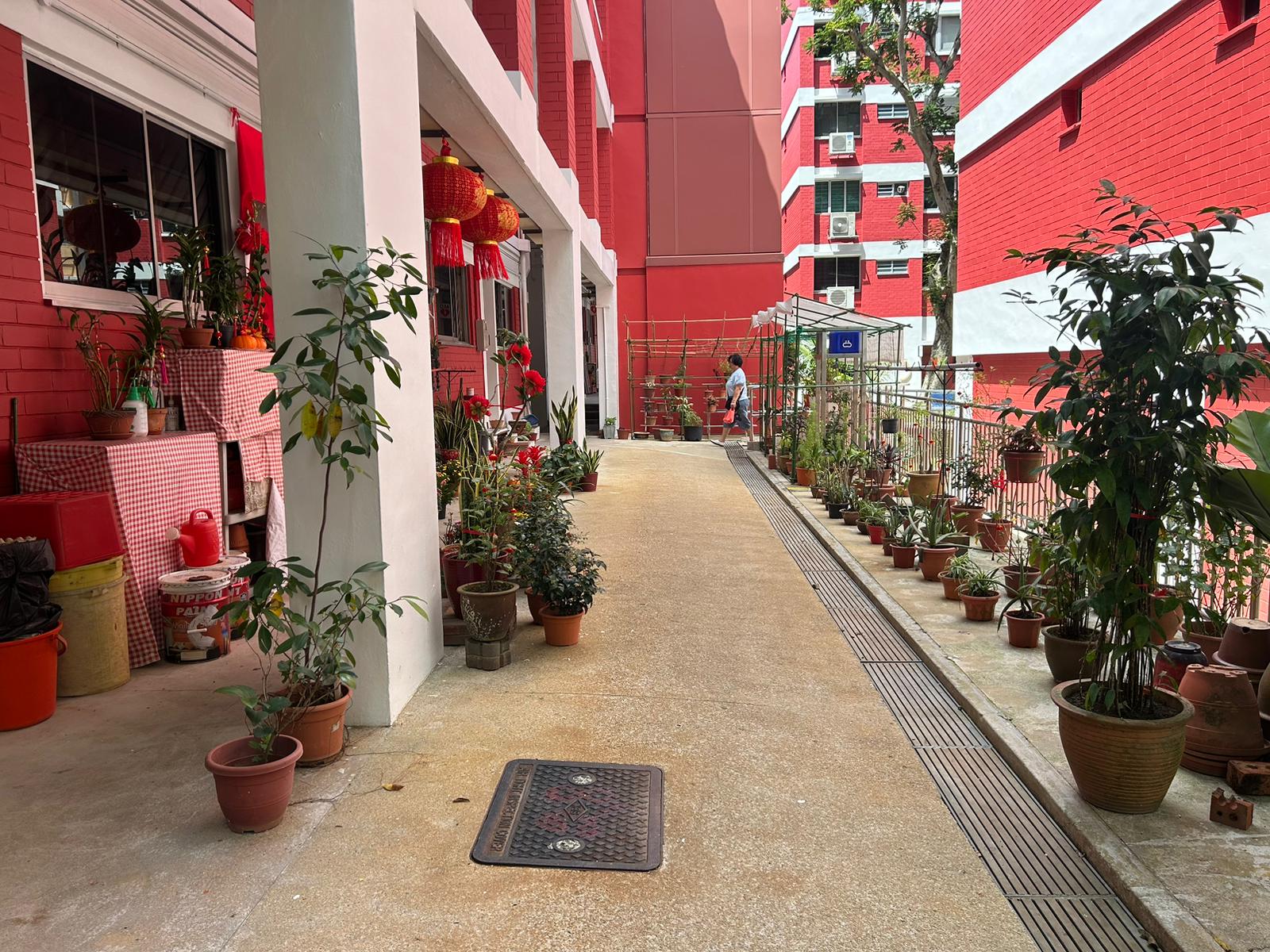
Conclusion
Due to space constraints, many Singaporeans living in public housing often find themselves gardening either in community gardens or along the corridor. It is thus not surprising that many envy those who have the privilege of owning and living in landed private property. In community gardens, tensions may arise among gardeners bickering over what to plant. Corridor gardens are similarly vulnerable to neighbourly squabbles. Additionally, the elevation from the ground greatly limits the diversity of plants that can be grown. Lau San thus opines:
A private house is good. The land is private, and you can grow things very well. It's not like here; sometimes you have to add soil or get new soil. A private house has good soil, and things grow well. Here, if you don't add soil, the plants won't look good, and they'll grow fewer. The more you plant, the less soil you have. I prefer having my own land like this, but I don't have the means to buy a private house.[26]
As illustrated by this article, the HDB corridor garden and community garden are significant and rich repositories of human-interest stories deeply intertwined with individual experiences of Singapore’s post-independence history. Behind their seemingly modest facades lie compelling narratives that deserve recognition. Singapore’s national heritage has ample space to accommodate its everyday vernacular gardens. For indeed, Singapore is a Garden City composed not only of well-maintained public parks, but also its variegated vernacular gardens cultivated by its ordinary citizens.
This project was supported by the National Heritage Board's Heritage Research Grant.
Notes
- See Koh Buck Song, Brand Singapore: How Nation Branding Built Asia’s Leading Global City (Singapore: Marshall Cavendish Business: 2011), p. 46-48.
- See Justin Zhuang, “From Garden City to Gardening City,” BiblioAsia 9/1 (2013): 4-9.; Timothy Barnard and Corinne Heng, “A City in a Garden” in Timothy Barnard, ed, Nature Contained: Environmental Histories of Singapore (Singapore: NUS Press, 2014), p. 281-306.
- Simon Longman, “Community in Bloom,” Ethos 2 (2007): 29-30.
- Jan Lee, “Covid-19 has Led to a Botanic Boom in Singapore as More People Become Plant Parents to Relieve Stress,” The Straits Times. 31 July 2020, Accessed 28 July 2021. https://www.straitstimes.com/lifestyle/home-design/covid-19-has-led-to-a-botanic-boom-in-singapore-as-more-people-become-plant
- John Dixon Hunt, and Joachim Wolschke-Bulmahn, “Introduction: Discovering the Vernacular Garden,” in John Dixon Hunt and Joachim Wolschke-Bulmahn, The Vernacular Garden (Washington, D.C.: Dumbarton Oaks Research Library and Collection, 1993), pg. 1-10.; Clarissa T. Kimber, “Gardens and Dwelling: People in Vernacular Gardens.” Geographical Review 94/3 (2004): 263-283.
- Fiona Williamson and Goh Ngee Chae Joshua, “From Garden to Table: Historical Experiences of Growing One’s Own Food in Singapore.” Presented at The Hungry City: Singapore's Food History in Global Perspective Workshop, 28 May 2021, Singapore. https://www.sgheritagefest.gov.sg/archive/2021/the-hungry-city---singapore-food-history
- Michael Kloos and Patricia Alberth, “The Case study of the Town of Bamberg (Germany) Concerning the Combination of Management Plans with Participation Strategies in Urban World Heritage Properties.” in Simon Makuvaza, ed, Aspects of Management Planning for Cultural World Heritage Sites: Principles, Approaches and Practices (Cham: Springer International Publishing, 2018), p. 209-223.
- Hemanthi Ranasinghe, “Traditional Homegarden Agroecosystems in Sri Lanka: Integrated Landscape Management to Achieve Sustainability.” ICH Courier 31 (2017): 14-15.
- Dishod Rahimov “Traditional Gardening Knowledge and Skills among Tajik People.” ICH Courier 17 (2017): 16-17.
- See, for example, Ashanté M.Reese, Black Food Geographies: Race, Self-Reliance, and Food Access in Washington, D.C. (Chapel Hill: University of North Carolina Press, 2019), pg. 84-90.
- See, for example, Matt Morris, Common Ground: Garden Histories of Aotearoa (Dunedin: University of Otago Press, 2020).; Amber Suro and Robert Voeks, “Uprooted: Gardening and Landscaping during the Japanese-American Internment.” The California Geographer 60 (2021): 73-94.
- See, for example, Marvin Joseph F. Montefrio, Lee Xin Run., and Elwin Lim, “Aesthetic Politics and Community Gardens in Singapore.” Urban Geography 42: 10 (2020): 1459-1479, DOI: 10.1080/02723638.2020.1788304; Harvey Neo and Chua Cheng Ying, “Beyond Inclusion and Exclusion: Community Gardens as Spaces of Responsibility.” Annals of the American Association of Geographers 10:7 (2017): 666-681.; National Parks Board and National Library Board, Community in Bloom: My Community, Our Gardens (Singapore: National Parks Board and National Library Board, 2014).
-
Loh Kah Seng, “Black Areas: Urban Kampongs and Power Relations in Post-War Singapore Historiography,” SOJOURN: Journal of Social issues in Southeast Asia 22:1 (2007): 1-29.; See also Sishir Chang, “A High-Rise Vernacular in Singapore’s Housing Development Board Housing,” Berkeley Planning Journal 14:1 (2000): 97-116.
-
Goh Ngee Chae Joshua, “The Invention of the Kampong Garden: Rural Nostalgia and Urban Gardening in Singapore,” Garden History 46:2 (2018): 154-169.
-
See, for example, Elisabeth Eber, “Some Historical Notes” in William Warren, Singapore: City of Gardens (Hong Kong: Periplus, 2000), pg. 22-25.; Timothy Barnard and Corinne Heng, “A City in a Garden.” in Timothy Barnard, ed, Nature Contained: Environmental Histories of Singapore (Singapore: NUS Press, 2014), pg. 284.
-
Interview with Lim S.H. R, 10 December 2022.
-
Goh Ngee Chae Joshua, “The Invention of the Kampong Garden”. See also Thien, “Nature and Nurture in the Making of a S’pore Garden,” The Business Times, 4 November 2006, p.2.
-
See NParks, “Community in Bloom Initiatives” NParks. web. 3 November 2020. Accessed 29 April 2021. < https://www.nparks.gov.sg/gardening/community-in-bloom-initiative >. See also National Parks Board and National Library Board, Community in Bloom, 16-17.
-
Ibid.
-
Interview with Atan K, 17 February 2023.
-
Interview with Lau S, 11 February 2023. Translated from Chinese.
-
Ibid.
-
Housing and Development Board, Key Statistics: HDB Annual Report 2019/2023 (Singapore: Housing and Development Board), p.8.; Home Gardening Singapore, Facebook [Group]. Retrieved July 26, 2021, from https://www.facebook.com/groups/3141185945926023/
-
Interview with Lim S.H. R, 10 December 2022.
-
Interview with Faridah, 15 September 2022.
-
Interview with Lau S, 11 February 2023. Translated from Chinese.




